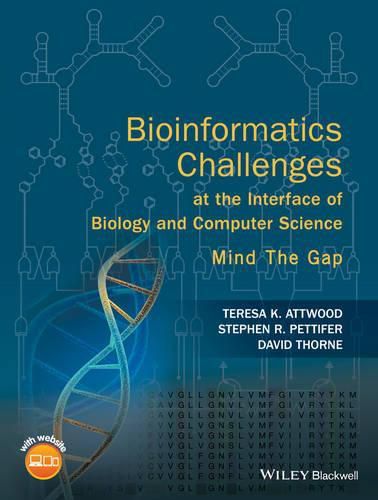Readings Newsletter
Become a Readings Member to make your shopping experience even easier.
Sign in or sign up for free!
You’re not far away from qualifying for FREE standard shipping within Australia
You’ve qualified for FREE standard shipping within Australia
The cart is loading…






This innovative book provides a completely fresh exploration of bioinformatics, investigating its complex interrelationship with biology and computer science. It approaches bioinformatics from a unique perspective, highlighting interdisciplinary gaps that often trap the unwary.
The book considers how the need for biological databases drove the evolution of bioinformatics; it reviews bioinformatics basics (including database formats, data-types and current analysis methods), and examines key topics in computer science (including data-structures, identifiers and algorithms), reflecting on their use and abuse in bioinformatics.
Bringing these disciplines together, this book is an essential read for those who wish to better understand the challenges for bioinformatics at the interface of biology and computer science, and how to bridge the gaps. It will be an invaluable resource for advanced undergraduate and postgraduate students, and for lecturers, researchers and professionals with an interest in this fascinating, fast-moving discipline and the knotty problems that surround it.
$9.00 standard shipping within Australia
FREE standard shipping within Australia for orders over $100.00
Express & International shipping calculated at checkout
This innovative book provides a completely fresh exploration of bioinformatics, investigating its complex interrelationship with biology and computer science. It approaches bioinformatics from a unique perspective, highlighting interdisciplinary gaps that often trap the unwary.
The book considers how the need for biological databases drove the evolution of bioinformatics; it reviews bioinformatics basics (including database formats, data-types and current analysis methods), and examines key topics in computer science (including data-structures, identifiers and algorithms), reflecting on their use and abuse in bioinformatics.
Bringing these disciplines together, this book is an essential read for those who wish to better understand the challenges for bioinformatics at the interface of biology and computer science, and how to bridge the gaps. It will be an invaluable resource for advanced undergraduate and postgraduate students, and for lecturers, researchers and professionals with an interest in this fascinating, fast-moving discipline and the knotty problems that surround it.